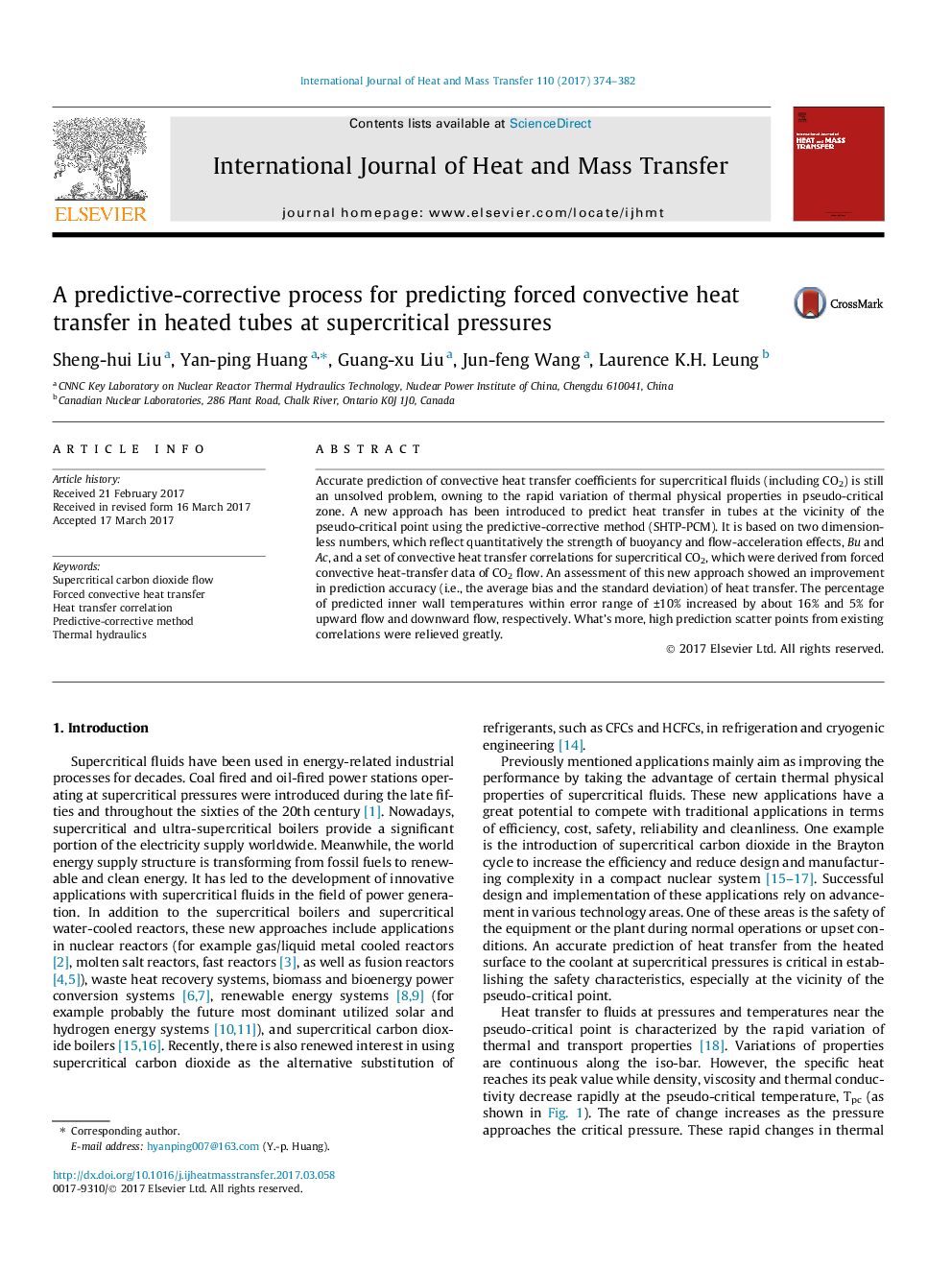| Article ID | Journal | Published Year | Pages | File Type |
|---|---|---|---|---|
| 4993572 | International Journal of Heat and Mass Transfer | 2017 | 9 Pages |
Abstract
Accurate prediction of convective heat transfer coefficients for supercritical fluids (including CO2) is still an unsolved problem, owning to the rapid variation of thermal physical properties in pseudo-critical zone. A new approach has been introduced to predict heat transfer in tubes at the vicinity of the pseudo-critical point using the predictive-corrective method (SHTP-PCM). It is based on two dimensionless numbers, which reflect quantitatively the strength of buoyancy and flow-acceleration effects, Bu and Ac, and a set of convective heat transfer correlations for supercritical CO2, which were derived from forced convective heat-transfer data of CO2 flow. An assessment of this new approach showed an improvement in prediction accuracy (i.e., the average bias and the standard deviation) of heat transfer. The percentage of predicted inner wall temperatures within error range of ±10% increased by about 16% and 5% for upward flow and downward flow, respectively. What's more, high prediction scatter points from existing correlations were relieved greatly.
Related Topics
Physical Sciences and Engineering
Chemical Engineering
Fluid Flow and Transfer Processes
Authors
Sheng-hui Liu, Yan-ping Huang, Guang-xu Liu, Jun-feng Wang, Laurence K.H. Leung,
